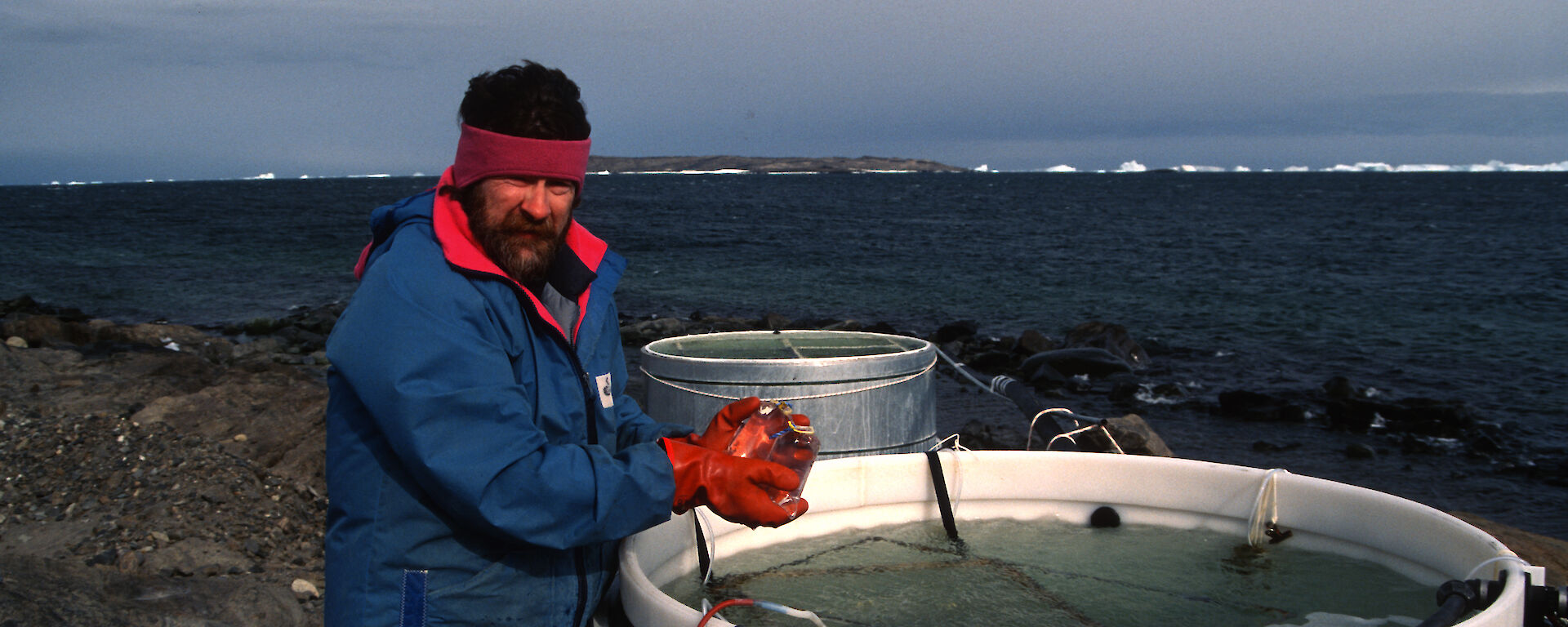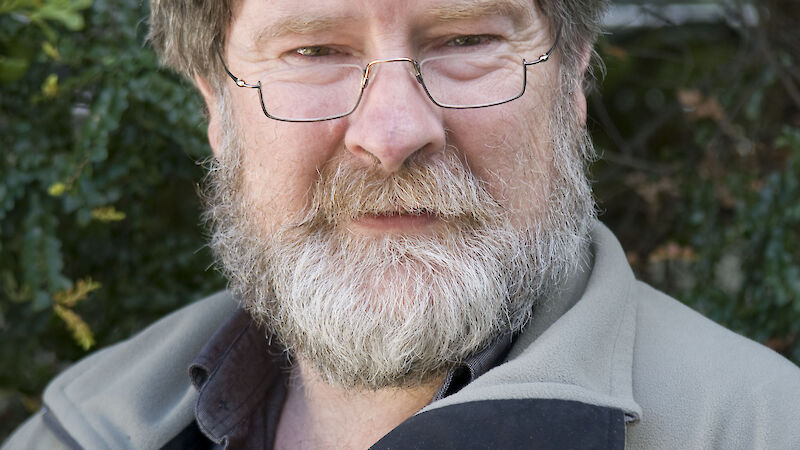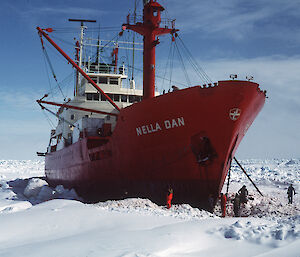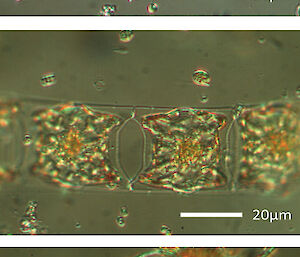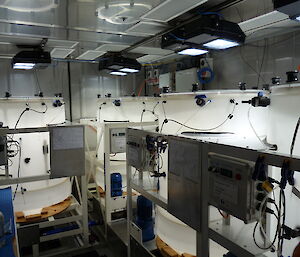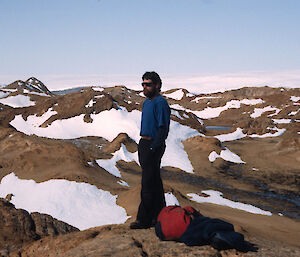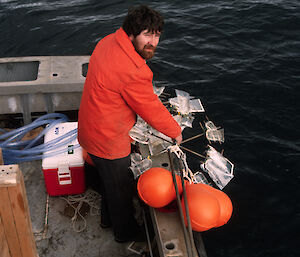After 17 trips to Antarctica over 31 years, marine microbial ecologist Dr Andrew Davidson is hanging up his ice axe for the last time to focus on publishing a backlog of data from his research. As a senior research scientist at the Australian Antarctic Division, Dr Davidson leads a small team studying plankton in the Southern Ocean, to better understand the sensitivity of Antarctic life to human-induced environmental change. Here he reflects on three decades of life and research in the Antarctic.
In 1983 I was considering doing an Honours degree and was looking around to see what was available at a range of institutions. At the Antarctic Division I met Harvey Marchant, whose encyclopaedic knowledge and infectious enthusiasm for the single celled organisms that inhabit the Southern Ocean captured my imagination. He opened my eyes to the importance of these tiny creatures and exposed me to a world of unimagined beauty and complexity.
These organisms thrive in what I’d presumed to be an extreme and harsh environment. This immediately begged the question ‘how do they excel in an environment that is apparently so forbidding?’ The rest of my career has involved trying to identify and understand pieces of that puzzle. I still marvel at these organisms’ plasticity and the adaptations that allow them to proliferate, despite the environmental challenges they encounter.
I fondly recall the mixture of trepidation and the thrill of adventure as I set off on my first trip to Antarctica as part of my Honours research. Not long before the vessel was to leave the wharf, Harvey asked if I’d included a length of garden hose amongst my equipment. I couldn’t imagine why I might need it. He rushed off to retrieve one from his home and cast it across the ever-widening gap between the wharf and the vessel as she pulled away. He was right, it proved very handy for getting seawater to the lab.
When I began my research, fundamental questions were still being asked about what protists (single celled plants and animals) occupied Antarctic waters. This was significantly due to the introduction of techniques and technologies (such as fluorescent and electron microscopy) that allowed small cryptic organisms to be resolved and identified. The recognition that these organisms play a vital role in mediating global climate has meant that the we still need to know what’s there and how much is there, but we also need to understand their roles in mediating food webs and global climate, and the effect of climate change on these processes.
Antarctica is a special place to work, but it is challenging and experience in the environment is invaluable. My first attempt at operating an incubation facility consisted of constant repairs and maintenance of frozen plumbing, broken pumps and fractured pipes. I also had ‘aspirational’ expectations of what I could achieve, unwittingly designing experiments that required up to 76 hours without sleep. However, the most productive and publishable experiments were often those conceived using simple techniques.
One of my most interesting discoveries involved an alga, Phaeocystis antarctica, which is abundant in Antarctic waters and which forms balloon-like colonies that can fill the water column with little translucent spheres. Each of these spheres may contain thousands of cells. I found that this remarkable alga filled its colonies with a sunscreen that was much more effective at absorbing ultraviolet radiation than the commercial sunscreen at the time. My studies showed that under high ultraviolet light, the sunscreen allowed Phaeocystis to out-compete other algae. We were approached by a French company that was interested in using these compounds in commercial sunscreens, but I don’t know whether they ever included them in their products.
One of my most memorable trips was a 1985 voyage aboard the Nella Dan, which set an unassailable record of 57 days besetment in Amundsen Bay. I was one of the lucky ones as there are always marine microbes to be studied, but some people were utterly unoccupied. Highlights included massive snow fights, soccer matches on the ice and some expeditioners developing a life-long antipathy for Danish pastries, pork or ‘Spong’ (a strange gelatinous pudding that came in a range of colours). However, the voyage led me to some interesting insights into the successional sequence of sea ice microbes and challenged some of the assumptions about Antarctic protists at the time.
This season just past (2014–15) was my last season in Antarctica as I have a backlog of research that needs to be published. It’s one thing to study a system, but you can only change the attitudes of people and the outcome for the region if you convince society and policy-makers that there are ways that we can nurture this planet to a better future.
It was great to finish my Antarctic service on a high note. The excellence of the research team and the application of new techniques and instruments meant that we could employ the most up-to-date and stringent methods, and the unfolding results of our experiments look fascinating.
Our early results reinforce that carbon dioxide (CO2) concentrations at or above those predicted by the end of this century negatively affects phytoplankton, reducing their productivity, growth and changing their composition. As the base of the Antarctic foodweb, changes at the microbial level are likely to impact on all other life in Antarctic waters. Together with the results from the Free Ocean Carbon Enrichment experiment, we are beginning to formulate a picture of the vulnerability of a range of Antarctic ecosystems to increased CO2.
The Southern Ocean absorbs around 40% of the CO2 humans are adding to the atmosphere and marine microbes play a critical role in facilitating and mediating this rate of CO2 uptake. Our results suggest that ocean acidification may reduce the capacity of the Southern Ocean to absorb CO2. This would accelerate the rate that CO2 accumulates in the atmosphere, worsening climate change. Yet ocean acidification is only one of the stressors we are imposing on these organisms and the net effect of coincident changes in other environmental factors (e.g. temperature, salinity, light and nutrients) may be profound.
Our experiments, along with a vast and compelling array of evidence from around the world, sound an alarm. As arbiters of the future global environment, we have an obligation to minimise the severity of climate change on all the living things with which we share the Earth. Our time to act is running out.
Andrew Davidson
Australian Antarctic Division
Related story: Changing Antarctica

